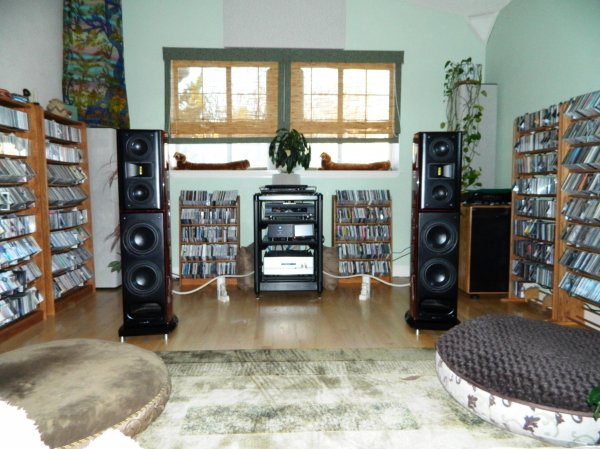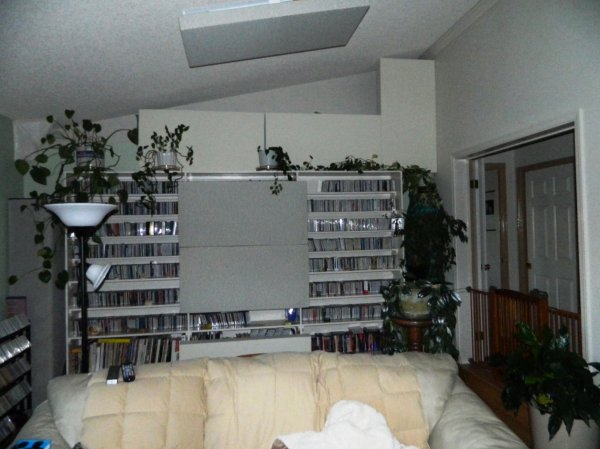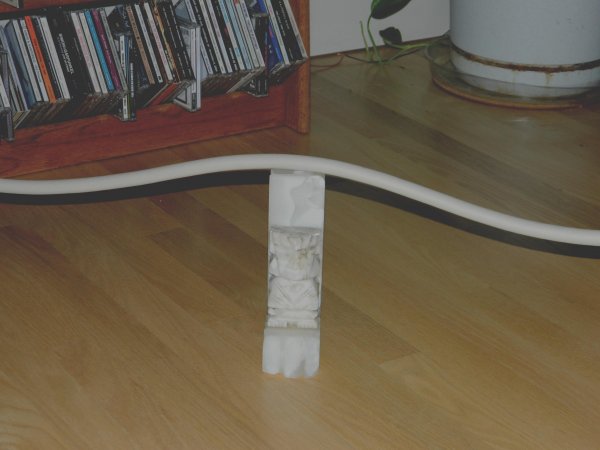Hello - I have visited this site for a while and have enjoyed the information that is exchanged, but I never joined to post until now. This is an interesting thread and I have discussed the room/system interaction to great length in the last several years with a couple of close friends - we have done several complete transformations in the exploration processs.
The first image shows my overall listening environment from about the listening position (there is another 10' behind the listening chair to an exterior wall). The dimensions are slightly distored due to a wide angle lens but the actual dimensions are the following: length 40', width 19' (at speaker placement), high cathedral ceiling where speakers are located.
The second image shows the rear of the room where the equipment is located which has a standard 9' ceiling.
The last shot is just a close up of the turntable in case someone was interested in what the heck it was...
Thanks for hosting a great site.
BruceView attachment 14343View attachment 14344View attachment 14345
The first image shows my overall listening environment from about the listening position (there is another 10' behind the listening chair to an exterior wall). The dimensions are slightly distored due to a wide angle lens but the actual dimensions are the following: length 40', width 19' (at speaker placement), high cathedral ceiling where speakers are located.
The second image shows the rear of the room where the equipment is located which has a standard 9' ceiling.
The last shot is just a close up of the turntable in case someone was interested in what the heck it was...
Thanks for hosting a great site.
BruceView attachment 14343View attachment 14344View attachment 14345









